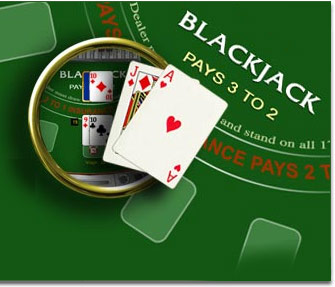Card Counting
A Guide to Counting Cards in Blackjack.
Counting cards is a means by which a blackjack player can change the odds in blackjack in the player's favor. Counting cards is based on the premise that high cards (cards ranked 10 or aces) are better for the player's expectation than low cards (two's through six's). When there are more high cards in the deck, the player will receive more blackjacks, and since blackjack pays out at 3 to 2 odds, this changes the odds dramatically in the player's favor when the deck is rich in ten's. A card counter typically raises his wager size when the deck is rich in high cards.
A player does not have to be brilliant or a savant to be able to count cards. Card counting is about determining the ratio of high cards to low cards in the deck, and this is done not by memorizing which cards have come out, but by giving each card a numeric value and keeping a running total.
Single Level and Multi Level Card Counting Systems
In simpler card counting systems, high cards are given a value of -1 and low cards are given a value of +1. When the running count gets high enough the player has an advantage because there are more high cards left in the deck compared to low cards. Card counting systems which only use values of +1 and -1 for the cards are considered level 1 systems, or single level systems.
Multi level systems for counting cards assign different values to different cards, sometimes counting some cards as +2 or +3, or -2 or -3. These systems are harder to use while playing, but provide a more accurate gauge of the player's advantage, and can make a bigger difference in terms of what strategy a player uses when deciding whether or not to hit, stand, or double.
Balanced and Unbalanced Counting Systems
Card counting systems can also be divided into balanced and unbalanced card counting systems. In a "balanced" card counting system, the total of all the point counts in a 52 card deck will add up to 0. In an "unbalanced" system, the point counts do NOT add up to 0.
Balanced systems required conversions from the running count to a true count in order to be useful. In other words, the count works perfectly in a single deck game, but in a game with multiple decks, the number of decks and the penetration into the deal have to be taken into account when deciding to raise a bet.
In an unbalanced system, the number of decks is taken into account by the starting value when counting. This compensates for the multiple decks. In an balanced count, the count starts at 0, but in an unbalanced count, the count starts with a number that corresponds to how many decks are in use, in order to compensate for the increased number of decks.
You may also be interested in learning about Blackjack Skills, overcoming Blackjack Weaknesses, Blackjack Myths and the constantly asked question: Is Online Blackjack Legal? We also have information about The SAFE Port Act of 2006.


 CasinoMax
CasinoMax


